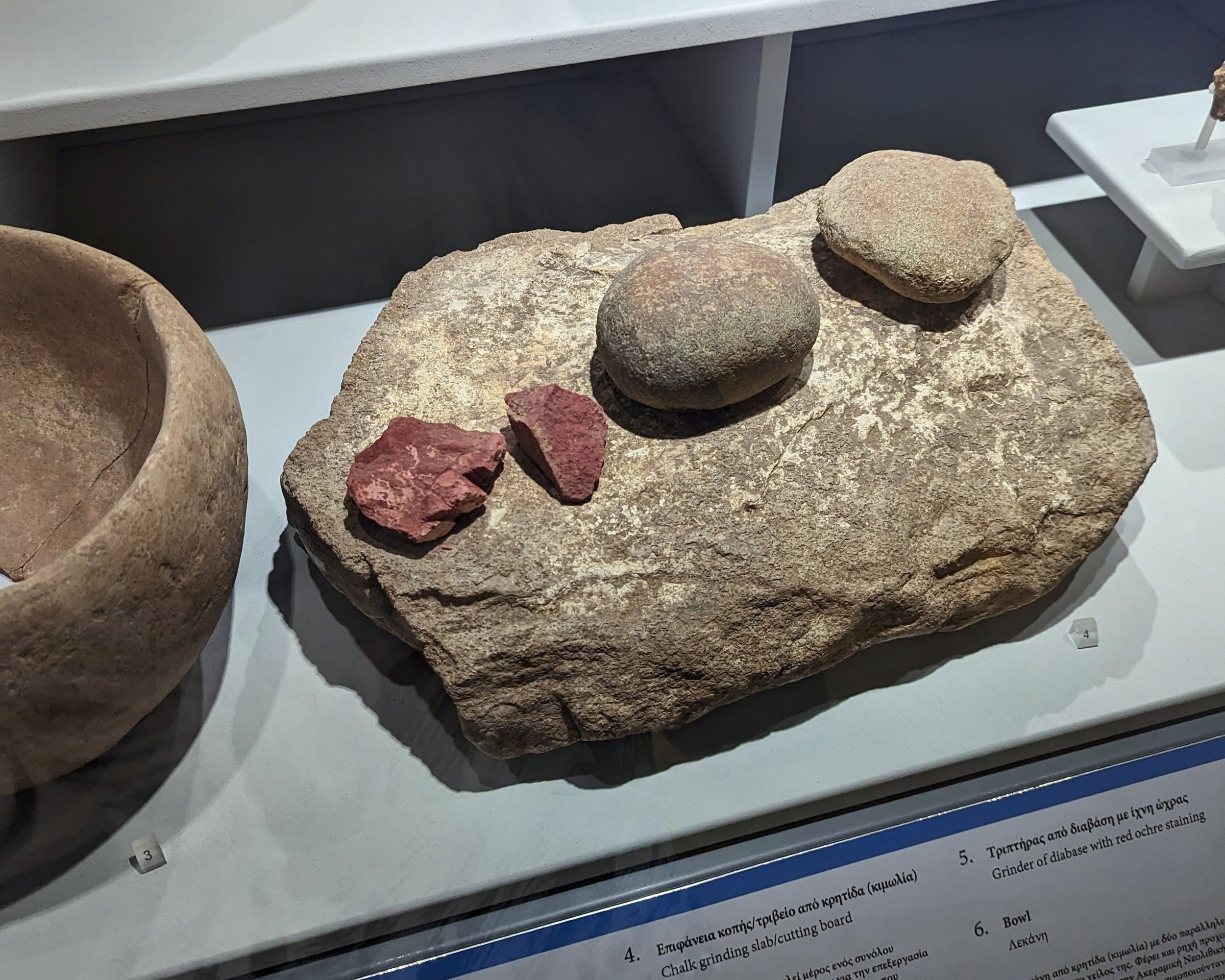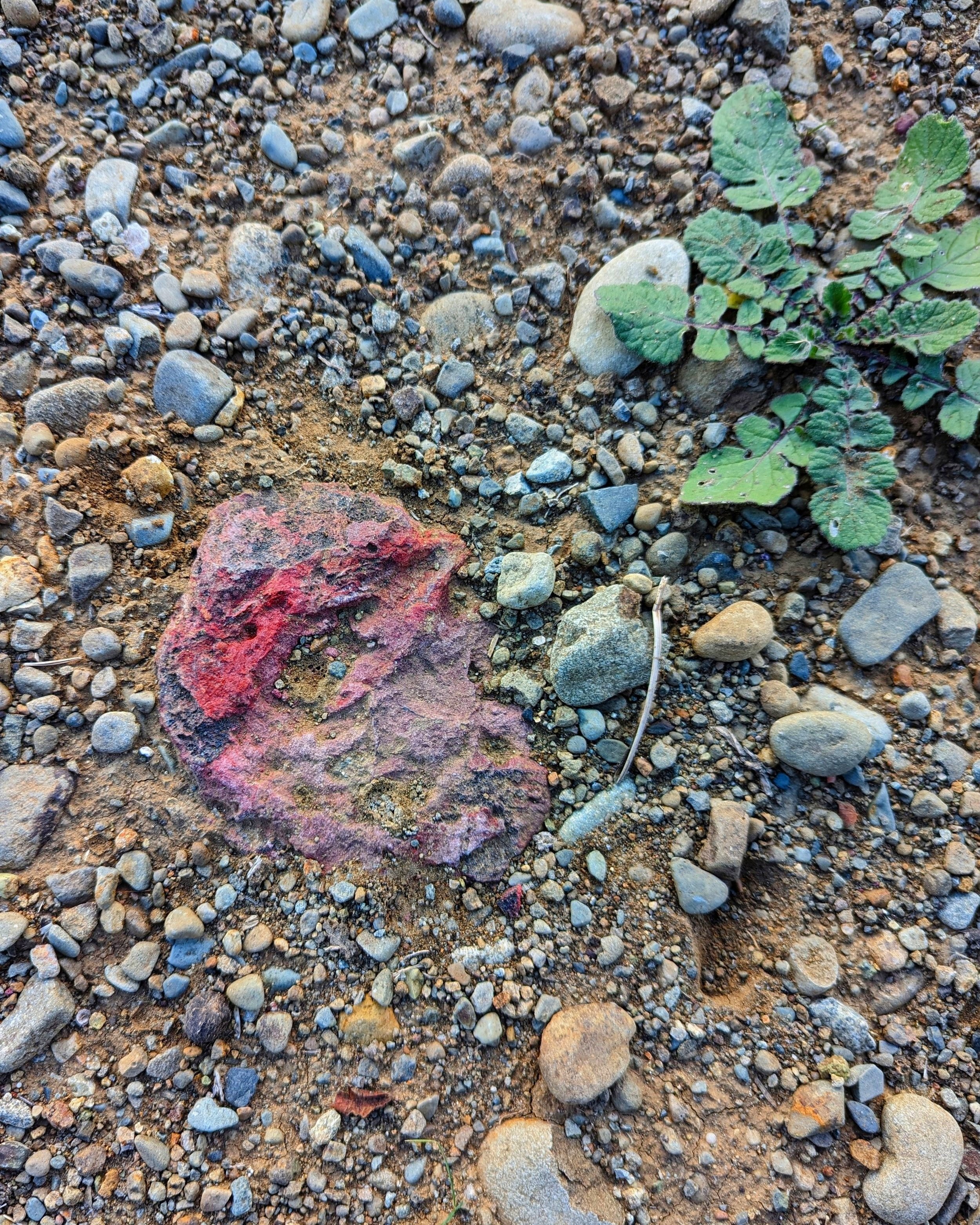Within the first few days of arriving in Nicosia back in September, I visited the oldest, largest Archaeological museum in the country: The Cyprus Museum. A place I have visited countless times since. From the atrium of the building, you take a right and follow the large galleries in a counterclockwise square, traveling through about 12,000 years of Cypriot history curated in neat chronological order, and are spit back out into the foyer where you began. My body vibrated with the hereness of that first visit. Look, I have spent many a day exploring the Institute for the Study of Ancient Cultures Museum in Chicago (formerly called the Oriental Institute) filled with treasures from the Middle East and North Africa, and have ogled the precious objects from all over the globe on display at the British Museum in London (perhaps more accurately called ‘The Stuff the British Stole from Everyone Else Museum’), from the freaking Rosetta Stone, to Assyrian wall-panels depicting royal lion hunts, to larger than life basalt figures made by the Rapa Nui. But before landing on this small island nation, I had never once had the experience of seeing the artifacts of a place, in that same place. Every stone mortar and diabase pounder and picrolite figurine and column fragment and ceramic vessel was created, used, loved, abandoned, and discovered well within a 200km radius of my body. Of and within. Total immersion.
First day exploring Nicosia in September – behind us are the 16th century Venetian Walls that surround the old city
It astounds me how things we already know, and things we already know we know, can continue to astound us. The whole reason I came to Cyprus was to work with the earth pigments from the landscape to reflect on the history embedded in place in the form of abandoned mines and archaeological sites. It’s the reason why I went to Chile before this, and it’s the reasoning behind my work about erosion and construction before that. I do know that the materials and objects forged by place hold the specific magic of and within that place, carnally, intrinsically, I know it. It’s the underpinning belief of the work that I’ve been doing for that past however many years, and yet, it still knocks me over with a feather.
In the first gallery to the right when you enter The Cyprus Museum, on the righthand side in the central vitrine, there is one particular artifact which has become a teacher to me:
“4. Chalk grinding slab/cutting board.
This chalk surface is part of an ochre processing tool kit. Ochre is a natural earth pigment that would have been used for colouring objects, animal skin, as well as people’s bodies. This example shows red ochre staining and cut-marks made during use.”
It is a large, flat, roughly rectangular rock, that sits on the shelf like a five inch thick placemat. The central part of the stone is worn and marred, vignetted by a warm, light gray margin of unscratched surface. Placed on top are two angular nodules of red ochre, and two hand sized pounding stones embedded with pulverized pigment. An opulent feast. These artifacts were used by humans on Cyprus 11,000 years ago, in a pigment processing workshop called Asprokremmos in Agia Varvara, a mere 25km from where my body stood in the museum.
In January, I found the site of the ancient ochre workshop nestled between lush green fields, by a river you only know is there because of the dense towering aisle of reeds. The site was excavated and refilled some 15 years ago, covered in the faded bottle green tarp I have come to recognize as an archaeological asterisk signifying ‘more below,’ overgrown with dense brush and weeds as tall as me, and partially enclosed by a fallen down fence. There is not much to see of the site, but there is a lot to feel. I sit down and use my eyes to trace the surrounding hillscape, the reeded river dancing in and out. My body remembers the familiar rhythm of crushing and grinding rock like the rocking of a boat after you’re back on dry land, and I think of the hands that did what my hands do, in this very same place, 11,000 years ago. I think of the souls attached to those hands, and wonder if they felt the same kind of connection to place, the same kind of embodied play, the same kind of portal through time that I feel in my own soul. I wonder if they were reaching forward in time to me the way I reach backward in time to them, and forward to those who will follow. Everything grows and changes and the stones remember it all.
Asprokremmos in Agia Varvara & the surrounding landscape
I bid farewell (for now, my love) to Asprokremmos, and was walking back to the dirt road where I had parked the car, about 10 minutes away. Through the light brown soil and green sprouting weeds and aggregate stones along the river, I saw a velvety red iris peering out at me. I knelt down, and with a bit of coercion, pried the gorgeous ellipse of ochre out of the earth and held it in my hands. It was an astounding violet red, soft and cool, an absolute treasure of a pigment stone. Do you remember the ochre gatherers that walked these lands all those years ago? Tell me what you remember, I promise I’ll listen. I took the stone back to my own ochre processing workshop, 25km away from where my body knelt on the earth. Of and within.
Red ochre near Asprokremmos, found tucked in the earth and later split open in the studio





